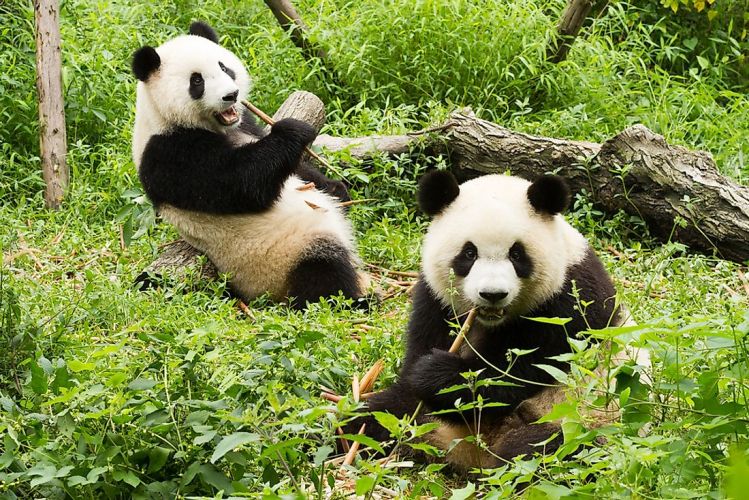
Giant pandas no longer endangered
Life Desk
Published:03 Aug 2021, 11:14 AM

Giant pandas no longer endangered
Giant pandas are no longer classified as endangered but are still vulnerable, Chinese officials say. The classification was downgraded as their number in the wild has reached 1,800. Experts say that the country managed to save its iconic animal through its long-term conservation efforts, including the expansion of habitats. China considers pandas a national treasure, but have also loaned them to other countries as diplomatic tools. The latest classification upgrade “reflects their improved living conditions and China's efforts in keeping their habitats integrated”, said Cui Shuhong, head of the Ministry of Ecology and Environment's Department of Nature and Ecology Conservation at a news conference. The new classification comes years after the International Union for Conservation of Nature (IUCN) had already removed the animal from its endangered species list and re-labelled it as “vulnerable” in 2016. At the time, however, Chinese officials had disputed the decision, saying that it could mislead people into believing that conservation efforts could be relaxed. This week's announcement by China's environmental ministry is the first time the animal's status was changed on its own endangered species list, which uses similar standards as the Swiss-based IUCN.
Chinese social media users were delighted at the news, saying that it is “proof” that conservation efforts are worth it. “This is the result of years of hard work. Well done to all the conservationists,” one person wrote on microblogging platform Weibo. Experts have said that the success is largely due to Chinese efforts to recreate and repopulate bamboo forests. Bamboo makes up some 99% of their diet, without which they are likely to starve. Zoos have also attempted to increase numbers via captive breeding methods. The giant panda also known as the panda bear (or simply the panda), is a bear native to South Central China. It is characterised by its bold black-and-white coat and rotund body. The name “giant panda” is sometimes used to distinguish it from the red panda, a neighboring musteloid. Though it belongs to the order Carnivora, the giant panda is a folivore, with bamboo shoots and leaves making up more than 99% of its diet. Giant pandas in the wild will occasionally eat other grasses, wild tubers, or even meat in the form of birds, rodents, or carrion. In captivity, they may receive honey, eggs, fish, yams, shrub leaves, oranges, or bananas along with specially prepared food.
The giant panda lives in a few mountain ranges in central China, mainly in Sichuan, but also in neighbouring Shaanxi and Gansu. As a result of farming, deforestation, and other development, the giant panda has been driven out of the lowland areas where it once lived, and it is a conservation-reliant vulnerable species. A 2007 report showed 239 pandas living in captivity inside China and another 27 outside the country. As of December 2014, 49 giant pandas lived in captivity outside China, living in 18 zoos in 13 different countries. Wild population estimates vary; one estimate shows that there are about 1,590 individuals living in the wild, while a 2006 study via DNA analysis estimated that this figure could be as high as 2,000 to 3,000. Some reports also show that the number of giant pandas in the wild is on the rise. In March 2015, conservation news site Mongabay stated that the wild giant panda population had increased by 268, or 16.8%, to 1,864. In 2016, the IUCN reclassified the species from “endangered” to “vulnerable”, affirming decade-long efforts to save the panda. In July 2021, Chinese authorities also reclassified the giant panda as vulnerable rather than endangered.